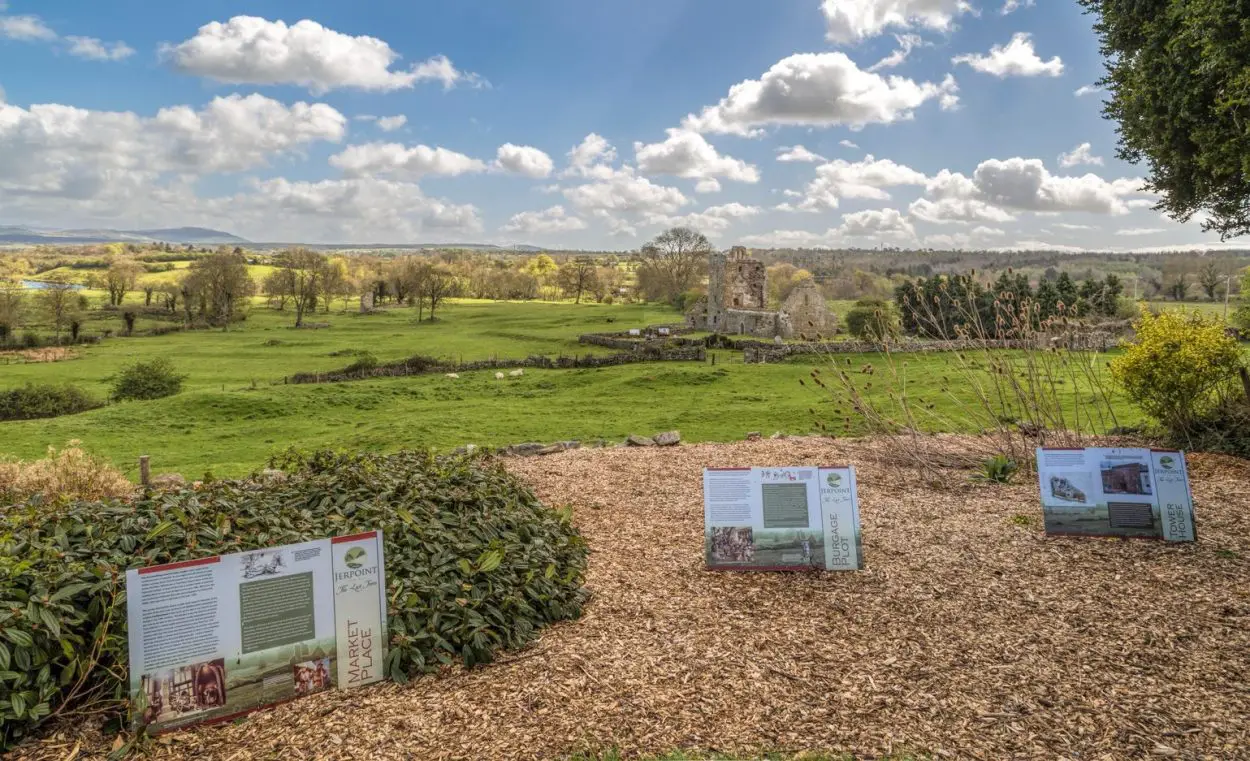Archaeologists have mapped the lost medieval market town of Newtown Jerpoint near Thomastown, County Kilkenny, Ireland.
Newtown Jerpoint is located just west of the Cistercian Jerpoint Abbey and was first incorporated as a borough in the early 13th century. The town was situated on the main crossing on the River Nore, giving Jerpoint its name which means ‘Nore bridge’.
Preliminary studies with LiDar in 2007 and historical records, suggests that the town had many homesteads, a courthouse, a woollen mill, a tannery, and a brewery.
It remained inhabited into the 17th or 18th century, but went into rapid decline, possibly due to the loss of its toll bridge and the re-routing of a central road which impacted the town’s trade and revenue.
The town was still noted in the historic Ordnance Survey Ireland maps published in 1842, but today, the area of the town is completely under agriculture with only the remains of the St Nicholas’ parish church surviving.
According to legend, St. Nicholas, who inspired the story of Santa Claus, was buried in the town around 800 years ago. His supposed gravestone features St Nicholas and the heads of two knights behind each shoulder, who are said to have carried Nicholas’ remains back to Ireland.
Another version of the legend connects the French family, the de Frainets, who removed Nicholas’ remains from Myra to Bari, Italy, in 1169. The de Frainets were crusaders in the Holy Land and were landowners in nearby Thomastown. They eventually moved to Ireland and are said to have moved the relics of St Nicholas to Newtown Jerpoint sometime in the 12th century.
It is worth noting, that in 2022, archaeologists announced the discovery of the tomb of St. Nicholas in the church of St. Nicholas, located in Turkey’s Antalya province. The Byzantine Emperor, Theodosius II, ordered the construction of the St. Nicholas Church over the site where Saint Nicholas had served as bishop.
His body was exhumed and reburied in the church, but by the 11th century, his remains were removed and enshrined as sacred relics in the Basilica di San Nicola located in Bari, Southern Italy. During the First Crusade, Venetian sailors removed most of his remains and transported them to Venice, where they were deposited in the San Nicolò al Lido monastery basilica.
In 1953, an inspection of bone fragments from both Bari and Venice determined that they came from the same individual, although authenticity to determine whether they belonged to Saint Nicholas is inconclusive.
Research by Daniel O’Mahony, a Teagasc Walsh Scholar at the UCD School of Archaeology and Dr Jesko Zimmermann, a Data Technologist in the Agrifood Business and Spatial Analysis Department at Teagasc, applied modern technologies to reveal what the town may have looked like.
As part of his Teagasc Walsh Scholarship, O’Mahony used LiDar and magnetic gradiometry to retrace the structures of the town, revealing lost features such as ridge and furrow, two mill complexes, domestic dwellings and animal enclosures.
In 2021, the UCD School of Archaeology conducted magnetic gradiometry of the area using a SENSYS Magneto MX V3 magnetometer. The study revealed what has been interpreted as a large mill complex in the south-east of the town, and a large anomaly further south which may be another complex. The large mill is still visible in the LIDAR imagery as a square feature, as are some other traces of wider the milling area.
Header Image – Newtown Jerpoint, with Cistercian Jerpoint Abbey in the background – Image Credit : Alamy (Under Copyright)





